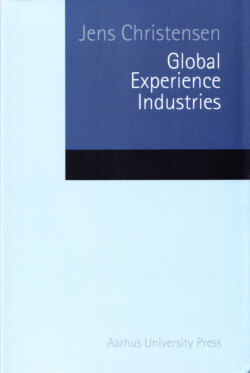Читать книгу Global Experience Industries - Jens Christensen - Страница 26
На сайте Литреса книга снята с продажи.
The Airlines Industry
ОглавлениеWhile most domestic tourists travel by car, international travel is dominated by airplanes, depending on the size of the country, too. Modern mass tourism depends on the enormous multitude of cars, airplanes and the industries that produce these transportation and energy means as well as a highly developed infrastructure allowing for fast and flexible movements around the world. The automobile industry and even more, the airplanes industry, is concentrated worldwide in a few global corporations, such as GM, Ford, Volkswagen, Peugeut/Citroën and Toyota and the two leading aircraft manufacturers American Boeing and West European Airbus. Transportation means producers are part of the tourism economy that work to make the tourism industry feasible and may be seen as impacts of the tourism industry, i.e. the tourism economy in a wider sense.
Whereas the global airplanes industry is highly concentrated within the Atlantic business community, the majority of the world’s countries have one or more airlines. For historic reasons, one airline dominates in most countries, i.e. the airline that used to monopolize national flights. Alone, USA, Japan and China have more than one large airline. In Western Europe, the core area of international tourism, aviation is still dominated by the previous monopoly companies, led by Lufthansa, British Airways, Air France, SAS, Alitalia and Iberia. Liberalization of the air transportation has only to a certain degree resulted in a consolidation process, mainly because governments have kept ownership of national airlines. Since the late 1990s, however, liberalization, has given rise to new and expanding discount airlines. Ryanair and EasyJet have developed into two of Europe’s largest airline companies, followed by other growing discount airlines such as Air Berlin. The USA aviation industry is also hit by the discount wave, Southwest Airlines being now one of the largest US airlines. The discount attack has threatened to ruin large and traditional airlines in United States and Western Europe. In order to survive, radical reforms have taken place in these airlines, cutting down costs by outsourcing and reorganizing from bureaucratic to flexible and market-oriented organizations.
FIGURE 10 Regional Revenues of the Global Airlines Industry in $bn, 2005
Source: ATW (2006). World Airline Financial Results 2005: www.atwonline.com.
The global airline industry is a gigantic business sector, including about nine hundred airline companies.30 Annually, they transport a continuously growing number of passengers that reached about 2 billion in 2005, served by seventeen hundred airports and a route net counted in millions of kilometers. Until the 1990s, the majority of the global airline traffic took place in or between North America, Western Europe, Japan and Oceania. Within the past decade, the Chinese development has made East Asian aviation expand enormously. The three leading regions of North America, Western Europe and East Asia and Oceania now comprise more than 90 percent of global aviation (Figure 10). Airlines are crucial to international tourism and an important economic sector with global annual revenues of $500 billion. More than half of this income is made by the world’s 20 largest airlines, such as Air France, Lufthansa, British Airways, SAS, and Ryanair in Western Europe, American Airlines, United Airlines, Delta Airlines, Northwest Airlines, and Continental Airlines in the US, and Japan Airlines and All Nippon in Japan.31
Even though airlines for historic reasons have been divided into many national companies, they have for decades cooperated on a global scale enabling passengers to fly easily to most parts of the world. As a consequence of standardized tickets and economic sharing organized via IATA (International Air Transport Association), with one ticket you can reach your goal by way of all airlines needed.32 Because discount airlines only sell tickets point-to-point they are excluded from this service.
Although the consolidation of airlines is moving on only slowly, liberalization and globalization have made airlines join in less binding ways. Three global alliances have emerged to achieve benefits of rationalization and improved customer services: Star Alliance, One World, and Sky Team.33 The leading members of Star Alliance include United Airlines, US Airways, Air Canada, Lufthansa, SAS, Varig, Singapore Airlines, Thai Airlines and South African Airways. Included in One World are American Airlines, British Airlines, Iberia, Cathay Pacific Airways, Qantas Airways, Aer Lingus, Finnair, LAN and Japan Airlines. The third global alliance, Sky Team, comprises Delta Air, Continental Airlines, Northwest Airlines, Air France and KLM Royal Dutch Airlines, Alitalia, Aeroflot, CSA Czech Airlines, Aeromexico and Korean Air. The route net of each of the three alliances embraces practically the whole world, making them work almost as three large airlines. The majority of all business and holiday travelers fly by way of the members of the three alliances and their individual airlines that offer web-based booking and ticket sales, too. Furthermore, airlines cooperate with most of the other actors in international tourism, including tour operators, travel agencies, insurance companies, electronic card providers, car rental companies, etc.
